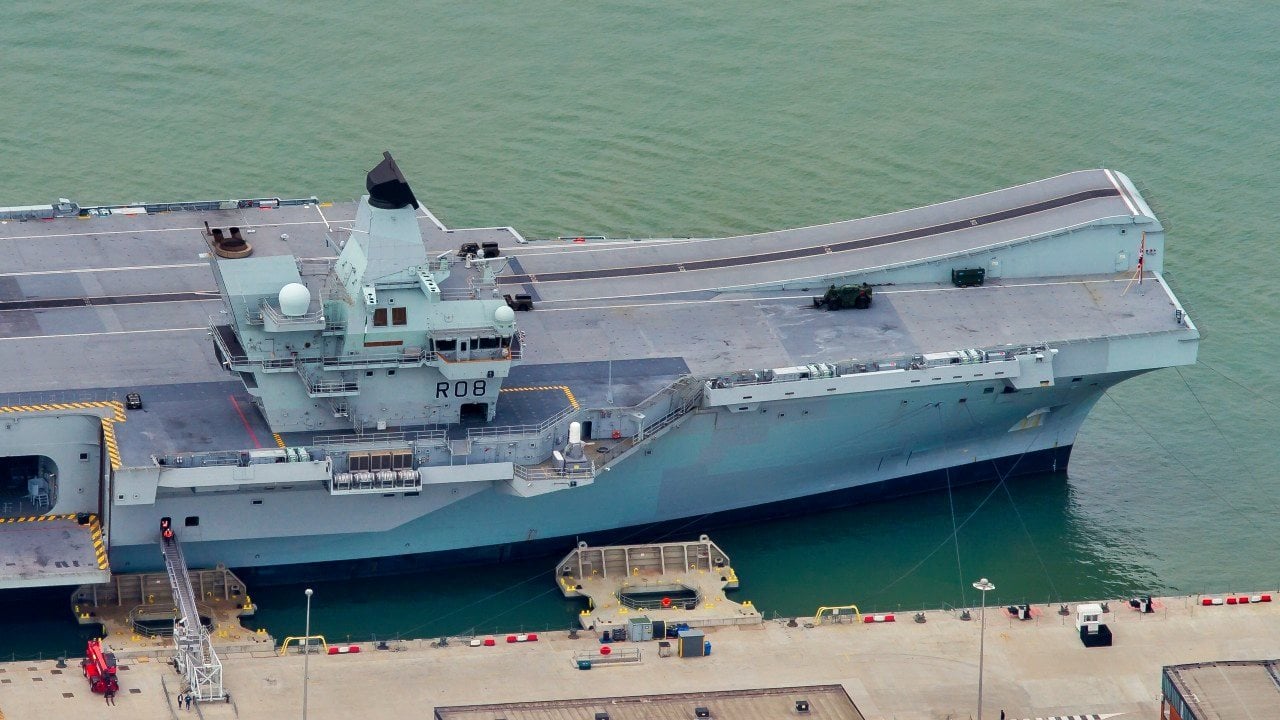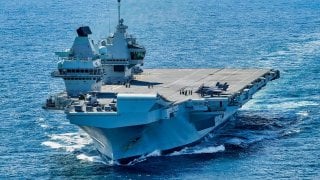The Royal Navy Has Spent Billions on Aircraft Carriers That Don't Work
This year, the UK's Royal Navy faced significant setbacks when its aircraft carriers, HMS Queen Elizabeth and HMS Prince of Wales, failed to participate in major NATO exercises due to mechanical issues and maintenance problems.
Summary and Key Points: The UK's Royal Navy faced significant setbacks this year when its aircraft carriers, HMS Queen Elizabeth and HMS Prince of Wales, failed to participate in major NATO exercises due to mechanical issues and maintenance problems.

-The Queen Elizabeth broke down during drills off Norway, and a fire incident further compounded its troubles.
-The Prince of Wales also experienced similar setbacks, highlighting ongoing challenges for the Royal Navy’s carrier fleet, which impacts their ability to fulfill crucial roles in international operations.
Royal Navy's Carrier Fleet: HMS Queen Elizabeth and Prince of Wales Hit by Setbacks
Earlier this year, the United Kingdom’s Royal Navy suffered an embarrassing blow when its $3.7 billion aircraft carriers failed to set sail in a major NATO exercise on two occasions.
During the international body’s Steadfast Defender drills off the coast of Norway this February, the HMS Queen Elizabeth broke down, and the HMS Prince of Wales never made it to the launch phase.
In January, the Queen Elizabeth was also unable to back up government assurances that she could be deployed to respond to Houthi aggression in the Middle East. Maintenance issues and budgetary constraints have certainly hindered the prowess of the Royal Navy’s carrier fleet.
Considering the UK’s role in the effort to thwart Houthi-launched barrages and ship seizures in the Red Sea, the protection and preservation of the country’s aircraft carriers should be a top priority.
Incidents involving the Queen Elizabeth carriers:
This year’s NATO exercise mishap did not mark the first time a Royal Navy carrier planned to participate but was forced to withdraw in a joint drill.
Back in August 2022, HMS Prince of Wales broke down while sailing to meet up with the U.S. Navy, Marine Corps and Royal Canadian Navy. Instead of participating in the planned exercise, the carrier had to be towed into Portsmouth harbor to undergo inspections.
Roughly six months later, a separate shaft onboard the Prince of Wales was discovered to require similar maintenance issues.
The HMS Queen Elizabeth has suffered from a similarly troubling history. The pricey warship caught fire while docked for repairs at Glenn Mallon on Loch Long in Scotland this March. While the blaze was quickly extinguished and no injuries were reported, the incident forced the warship to withdraw from the Steadfast Defender.
According to the Royal Navy, The Queen Elizabeth’s propeller problem was “the second setback for the Royal Navy in less than three weeks,” according to the Associated Press, “following a collision by two warships in a harbor in Bahrain, causing damage to the vessels but no injuries.”
An overview of the Queen Elizabeth class:
HMS Queen Elizabeth is the lead ship of the Royal Navy’s Queen Elizabeth class of carriers. She was commissioned in 2017 and entered service three years later. HMS Prince of Wales is the second ship in the class and commissioned into the Royal Navy in 2019. Both of these aircraft carriers displace around 65,000 tons, a much greater amount than earlier British carrier classes.

The ships are powered by a pair of Rolls Royce Marine Trent Mt30 36MW gas turbine generator units instead of using nuclear propulsion like the U.S. Navy’s Nimitz and Ford-class carriers. While the Queen Elizabeth ships do possess a range of advanced capabilities, including the Phalanx Close-in Weapons System, a radar-guided gun and other close-in options, the long term future of these carriers in the Royal Navy seems dubious at the moment based on their track record.
About the Author: Defense Expert Maya Carlin
Maya Carlin, National Security Writer with The National Interest, is an analyst with the Center for Security Policy and a former Anna Sobol Levy Fellow at IDC Herzliya in Israel. She has by-lines in many publications, including The National Interest, Jerusalem Post, and Times of Israel. You can follow her on Twitter: @MayaCarlin.
All images are Creative Commons or Shutterstock.
From the Vault
Russia Freaked Out: Why the U.S. Navy 'Unretired' the Iowa-Class Battleships
Battleship vs. Battlecruiser: Iowa-Class vs. Russia's Kirov-Class (Who Wins?)


